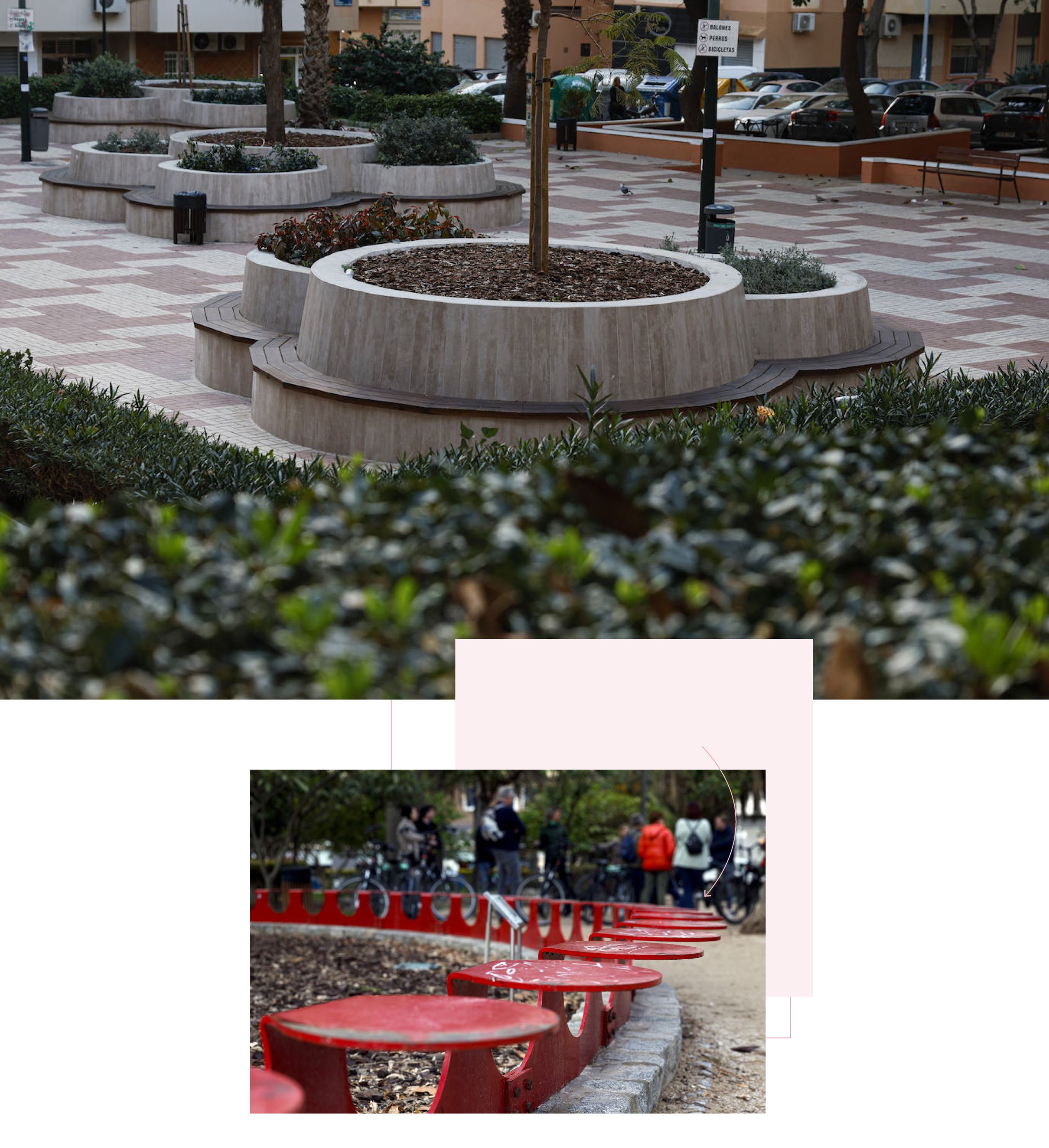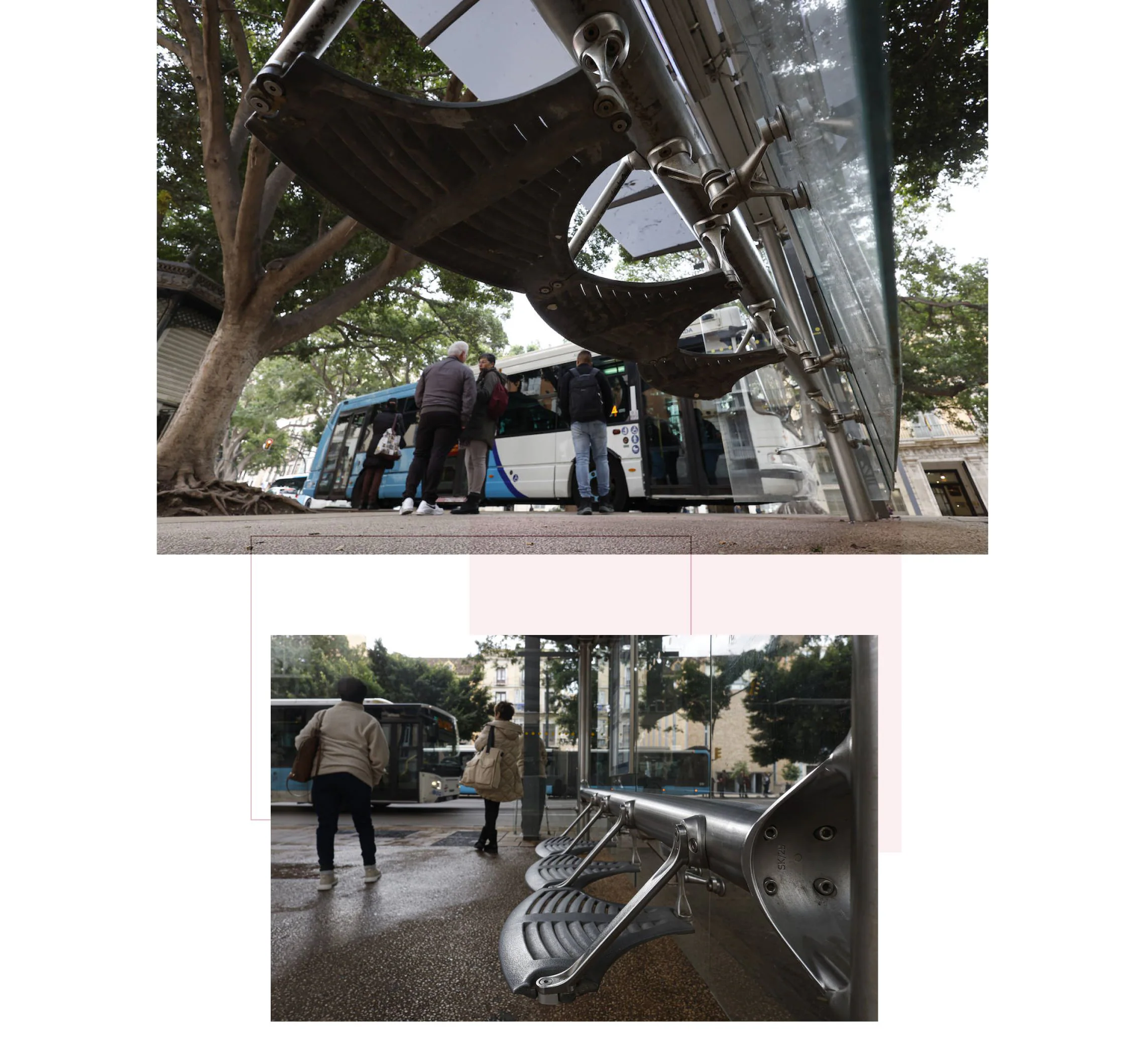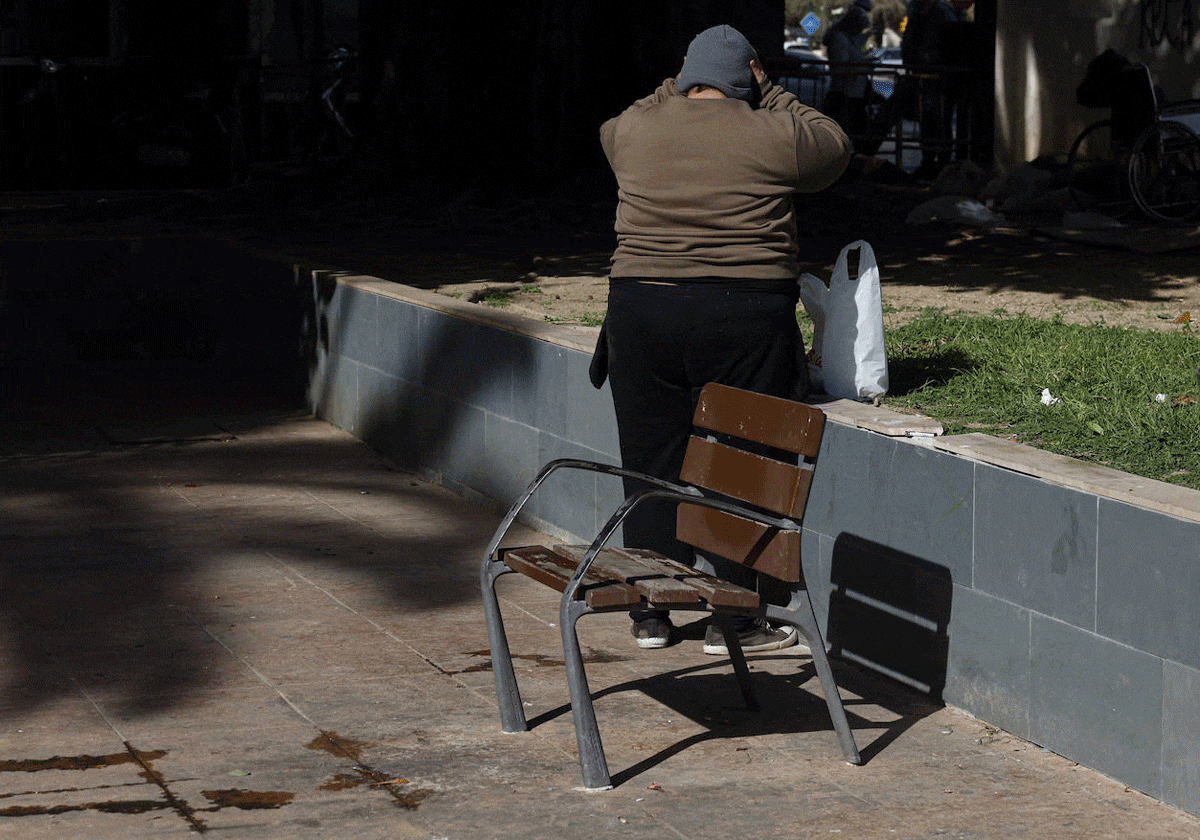Street furniture that drives the homeless out of Malaga city centre
SUR has documented the increased use of 'hostile architecture' or 'anti-homeless' measures in civic spaces
Susana Zamora
Martes, 21 de marzo 2023
SUR has documented the growth of 'hostile architecture' or 'anti-homeless' measures in civic spaces after an incident involving a traditional wooden bench on a busy street in Malaga city. This bench, one of several that lined the city centre thoroughfare, had been popular with neighbours and shopkeepers but were no longer seen with the same eyes when a homeless person turned one of them into his dwelling.
The installation grew and grew, with cardboard followed by plastic sheeting, a mattress and various utensils. The individual never caused any problems, but the response was not long in coming: he was moved on by the Local Police four times. After the last police intervention, he was never seen in the area again.
There are thousands of such benches in the city. They are the majority, according to the city hall, but it is increasingly common to come across other designs of street furniture and public spaces that are modified with the intention of discouraging undesired use. Circular benches, one-person benches or benches with dividing metal armrests designed to prevent anyone from lying on them. They are just one example of what is known as 'hostile architecture' or 'anti-homeless' furniture.

Councillor for Social Rights, Equality, Accessibility, Inclusive Policies and Housing in Malaga, Francisco Pomares, prefers to call it 'defensive architecture', because in his opinion what is sought is a vandal-proof design.

However, he admits that there is a tendency to install this type of furniture, "not so much to prevent a homeless person from using it, but to meet the public's need to rest while taking a break, while at the same time preventing improper use".

He gives as an example meetings between people that can go on for too long and cause noise when neighbours are looking for rest. "They are the first to ask us to change them or to remove them directly to prevent these meetings from taking place in their area," Pomares said.

He stressed that the response from neighbours has "always" been very positive, even with the individual benches in the Alameda Principal. "Contrary to popular belief, sitting opposite each other invites conversation," Pomares said.
